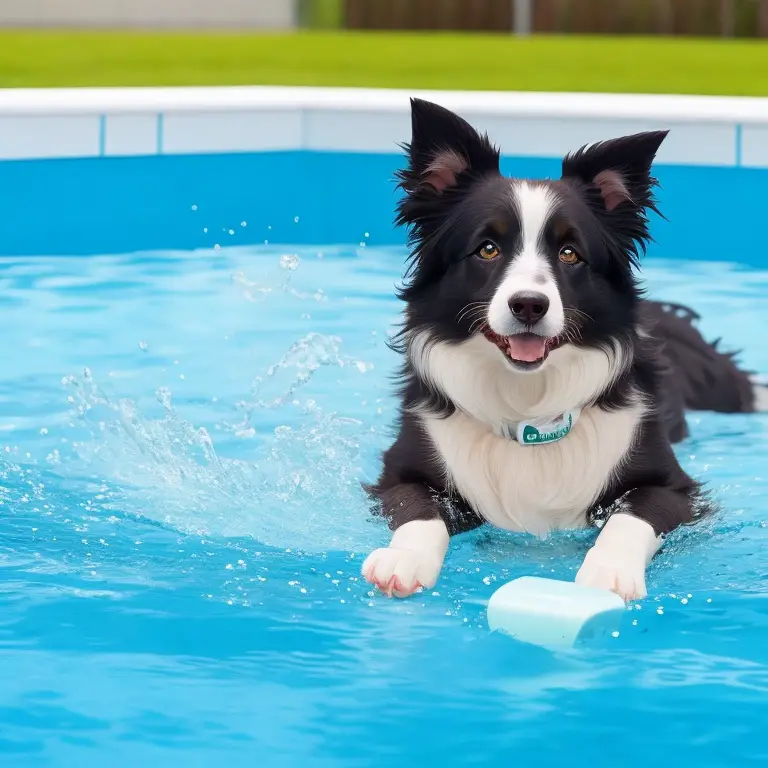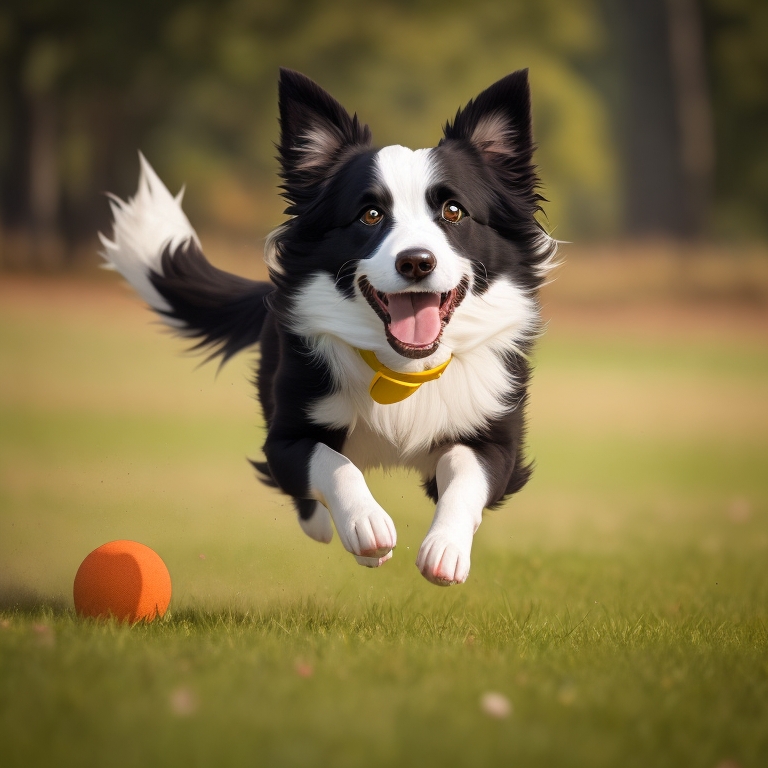How To Prevent Border Collies From Chasing Wildlife?
Are you a proud owner of a Border Collie but struggling to prevent them from chasing wildlife? It’s no secret that Border Collies have a natural herding instinct, and it can be challenging to keep them from chasing animals like squirrels, rabbits, or birds.
However, it’s essential to be a responsible owner and prevent any harm to both your dog and the local wildlife.
In this article, I will share preventive measures that you can take to train your Border Collie, manage their behavior, and offer alternative outlets for their instincts. Let’s dive in and learn how to protect the ecosystem and your furry friend.
| Preventative Measure | Description |
|---|---|
| Training | Train your Border Collie to obey commands such as “stop”, “leave it”, or “come”. Positive reinforcement is key for successful training. |
| Leash | Use a leash when walking your Border Collie to control their movements and prevent them from chasing wildlife. Consider a retractable leash for more freedom, but be prepared to quickly reel them in if needed. |
| Supervision | Always supervise your Border Collie when outside to make sure they don’t dart off to chase wildlife. If you can’t supervise them, consider confining them indoors or using a secured outdoor play area. |
| Environmental Modifications | Make modifications to your yard or property to deter wildlife from entering, such as fencing or planting strategically placed bushes or trees. |
| Outlets for Energy | Provide your Border Collie with plenty of exercise and mental stimulation to help curb their natural instinct to chase. Consider games of fetch, agility courses, or puzzle toys to keep them occupied and satisfied. |
Understanding Border Collies and their herding instincts
Characteristics of Border Collies
Border Collies are a medium-sized breed known for their intelligence, energy, and herding instincts. They are highly trainable and excel in various activities such as obedience, agility, and frisbee.
They require a significant amount of exercise and mental stimulation to prevent destructive behaviors.
Border Collies have a double coat that consists of a thick and soft undercoat and a straight or wavy topcoat. They come in a variety of colors, including black and white, sable and white, red and white, and blue and white.
These dogs are naturally driven to herd and chase prey, including wildlife, due to their instincts.
They are highly alert and have a strong work ethic, making them excellent at herding livestock. However, if left untrained and unsupervised, Border Collies may attempt to herd anything that moves, including cars, bikes, and people.
Border Collies also have a strong inclination towards separation anxiety, which can make them prone to destructive behaviors if left alone for extended periods.
In summary, Border Collies are intelligent, energetic dogs with strong herding instincts and a high need for exercise and mental stimulation. As a responsible owner, it’s essential to understand their behavior and provide adequate training and socialization to prevent destructive behaviors such as chasing wildlife.
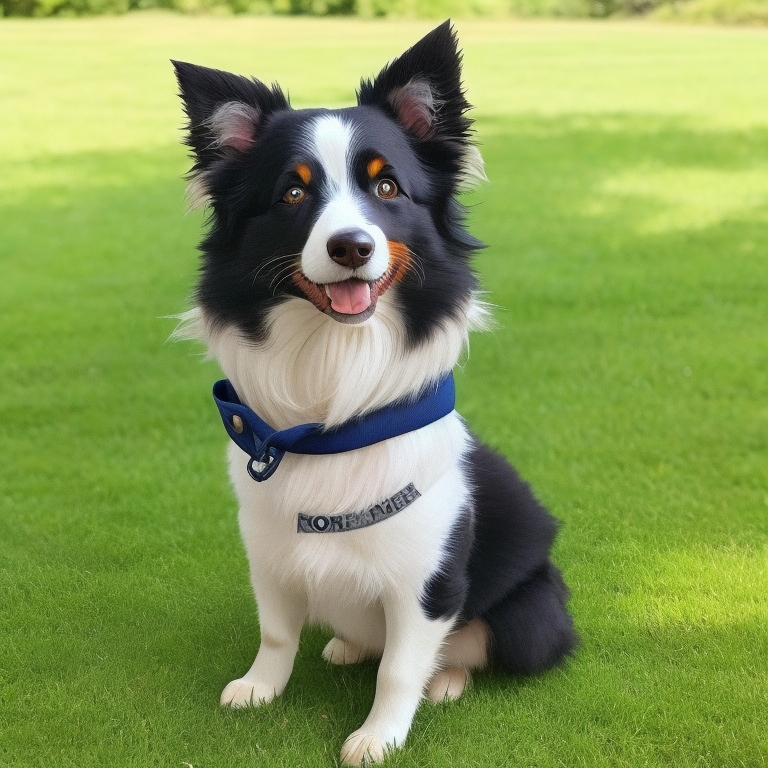
Herding instincts of Border Collies
Border Collies are known for their natural herding instincts, which make them excellent working dogs on farms. This herding behavior is deeply ingrained in their DNA and can manifest in various ways, including chasing after other animals.
These dogs have a strong drive to control and move animals, whether it’s livestock or small prey.
They may try to corral or “herd” other dogs, children, or even cars. While their herding instincts make Border Collies excellent workers, it can also lead to behavior problems when they are not given an outlet for it.
Without proper training and socialization, Border Collies may chase after wildlife, which can have detrimental effects on local ecosystems and harm the dog and wildlife.
Understanding their herding instincts is the first step in preventing Border Collies from chasing wildlife. By providing alternative activities and outlets for their herding behaviors, such as agility courses or Frisbee games, you can help keep your dog’s instincts under control and prevent them from chasing wildlife.

The dangers of Border Collies chasing wildlife
Impact on local ecosystems
When Border Collies chase wildlife, it can have a significant impact on the local ecosystem. These herding instincts can cause harm to animals and plants in the area, disrupting the natural balance of the environment.
Border Collies may chase small animals like rabbits, squirrels, and birds, preventing them from resting or foraging for food.
In turn, these small animals may become malnourished or starve, affecting their population size and potentially disrupting the food chain. Moreover, Border Collies can damage vegetation and plants, particularly in fragile or protected areas.
For example, trampling on plants or digging tunnels in the soil can destroy vital resources for other animals living in the ecosystem.
In summary, Border Collies chasing wildlife can have drastic effects on the local ecosystem, including harm to small animals and disruption of vegetation and plants. It’s essential to take measures to prevent this behavior and protect the delicate balance of the environment.
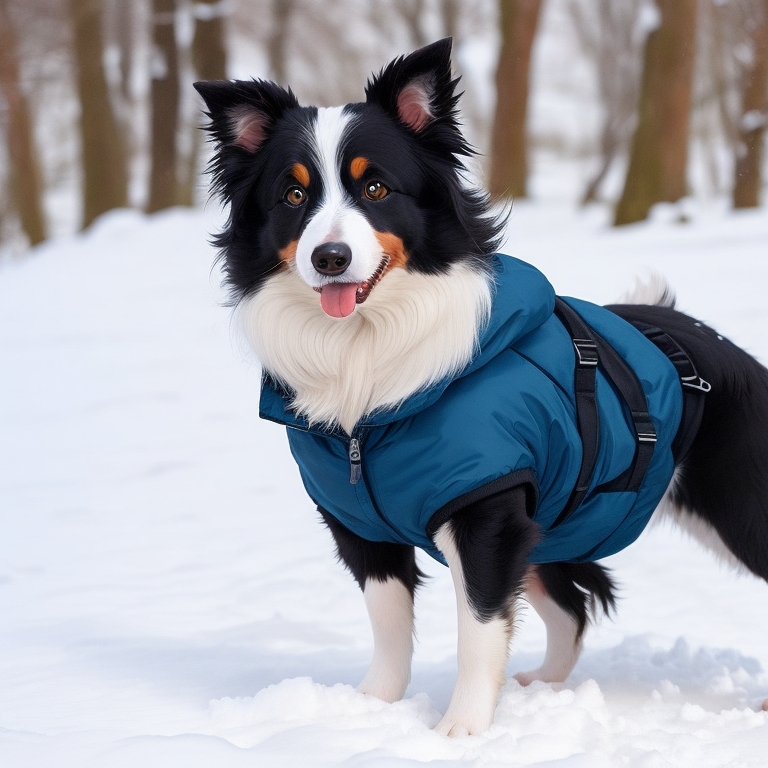
Safety risks for the dog and the wildlife
When Border Collies chase wildlife, it poses significant safety risks for both the dog and the wildlife. The dog could get injured or attacked by the wild animals, and the wildlife could get distressed, injured, or killed.
For instance, the dog could get bitten, scratched, or infected by the wildlife or encounter hazardous or poisonous plants or animals.
On the other hand, chasing wildlife can be lethal for the wildlife population, particularly for smaller animals like rabbits, birds, and squirrels, causing traumatic injuries, paralysis, or death. Moreover, disrupting the natural behaviors of wildlife could lead to imbalances in the ecosystem, disrupting the food chain and leading to long-term ecological problems.
Therefore, as a responsible Border Collie owner, it’s crucial to prevent your dog from chasing wildlife and keep them and the wildlife safe from potential harm.
In the next section, we will discuss practical measures to prevent Border Collies from chasing wildlife.
Prevention measures for Border Collies chasing wildlife
Training and socialization
To prevent Border Collies from chasing wildlife, training and socialization are essential. Positive reinforcement techniques, such as rewarding good behavior and ignoring bad behavior, should be used consistently.
Environmental exposure can help your Border Collie become comfortable around different animals and learn that not everything is a herding opportunity.
In addition to training, management strategies like leashing your Border Collie or using fences or barriers are crucial. These methods ensure that your dog cannot chase wildlife impulsively.
Providing alternative activities and outlets for your Border Collie’s herding instincts such as agility courses, competitions, or sports like Frisbee or flyball can help keep their focus away from wildlife and prevent them from chasing animals.
As a responsible owner, educating yourself about your dog’s needs and behavior, respecting and protecting local wildlife, and setting up boundaries and rules for your Border Collie are vital. Training and socialization require patience, consistency, and time.
With proper training and socialization, you can help your Border Collie to be a well-mannered and reliable companion without triggering their instinct to chase wildlife.
Positive reinforcement techniques
Positive reinforcement techniques are essential in preventing Border Collies from chasing wildlife. These techniques primarily involve reinforcing good behavior with rewards.
Positive reinforcement techniques make use of high-value treats, verbal praise, and toys to help encourage your Border Collie’s good behavior.
One way to use positive reinforcement techniques is to reward your dog whenever they approach wildlife calmly or show self-control. You can also use treats and verbal praise to reward your Border Collie when they walk away from wildlife.
It is important to avoid scolding or punishing your dog, as this can reinforce bad behavior.
Training your Border Collie to come when called is another essential positive reinforcement technique. Begin by calling your dog’s name, followed by, “come” each time you have a treat.
When your Border Collie comes to you, give them a treat and verbal praise.
Positive reinforcement techniques can also be combined with environmental exposure, which involves introducing your Border Collie to various environments, including different animals and wildlife. Gradually increasing your dog’s exposure to wildlife will help them become more comfortable and less reactive to animals.
In summary, positive reinforcement techniques are effective in preventing Border Collies from chasing wildlife.
Rewards such as high-value treats, verbal praise, and toys can be used to encourage good behavior. Additionally, training your dog to come when called and gradually increasing their exposure to wildlife will help establish good habits and minimize the risk of chasing wildlife.
Environmental exposure
One effective prevention measure for Border Collies chasing wildlife is environmental exposure. This involves exposing your dog to various environmental stimuli from an early age, such as different sights, sounds, and smells, to help them become desensitized and less reactive towards wildlife.
For instance, you can take your Border Collie on walks in parks or nature reserves where they can encounter different animals and learn to ignore them.
It is essential to start this process gradually and with control to avoid overwhelming your dog. Additionally, you can use a professional animal behaviorist to expose your Border Collie to different animals in a controlled setting to help them learn how to behave appropriately.
By providing your Border Collie with environmental exposure, you can help them develop the skills and behavior needed to prevent them from chasing wildlife.
Management strategies
Now let’s focus on the management strategies to prevent Border Collies from chasing wildlife. These strategies can be a crucial part of your prevention measures and help you avoid any unwanted incidents.
Leashing your Border Collie is one of the simplest and most effective management strategies.
Make sure to keep your dog on a leash or a longline whenever taking it outside. It allows you to control your dog’s movement, especially in areas where wildlife is present.
This way, you can restrain your dog and prevent it from chasing anything it shouldn’t.
Using fences and barriers can be another helpful management strategy. Fencing or scaping the property with barriers such as hedges, walls, or gates could minimize your Border Collie’s interaction with wild animals outside your home area, providing a safe and secure space for it to enjoy.
Finding alternatives that provide an outlet for your Border Collie’s herding instincts can be a great way to manage your dog’s behavior towards wild animals.
You can try fun activities like agility, frisbee, flyball, allowing your dog to utilize their energy and give them a sense of purpose during outdoor activities. Implementing these management strategies together with training and socialization can ensure your Border Collie stays away from wildlife.
Leashing your Border Collie
Leashing your Border Collie is one of the best prevention measures to keep them from chasing wildlife. When you’re in an area with wildlife, always keep your dog on a leash.
This helps you control the dog’s movements and keep them from running off after prey.
You can use a standard leash or a retractable one, but make sure it’s secure and suitable for your dog’s size. When your Border Collie is on a leash, you’ll be able to monitor their behavior and intervene if necessary.
If you notice your dog becoming fixated on a particular animal or scent, you can redirect their attention to a toy or a treat.
Leashing your Border Collie is also safer for them, as they won’t be able to chase animals into dangerous areas like roads or steep terrain. Make sure your Border Collie is comfortable wearing a leash and that it fits correctly.
You don’t want to harm your dog by using an uncomfortable or inappropriate leash.
With the right leash, you can enjoy walks with your dog while also protecting local wildlife.
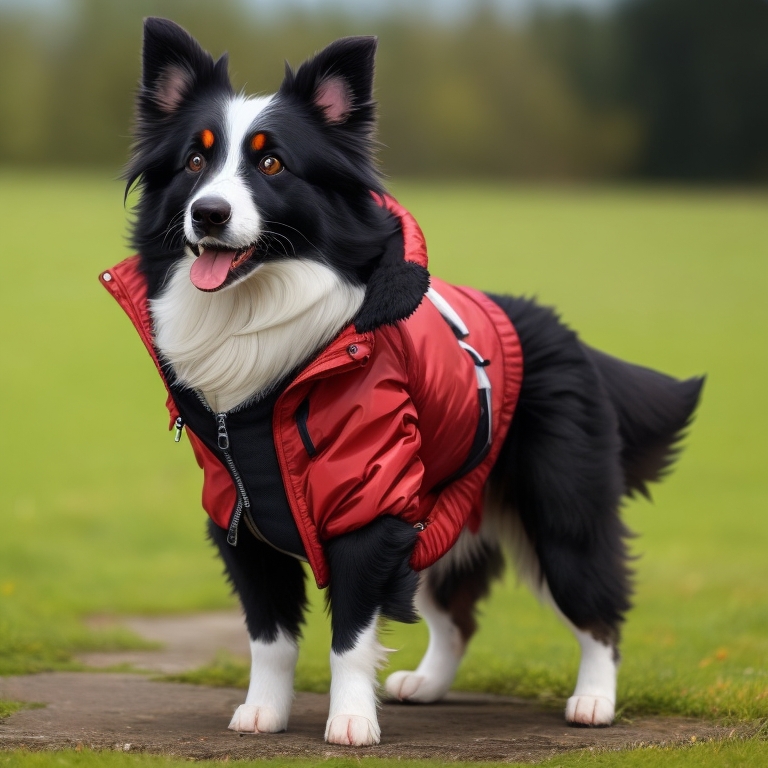
Using fences or barriers
Using fences or barriers is an effective way to prevent Border Collies from chasing wildlife. Physical barriers like fences and walls restrict your dog’s access to areas where they can chase and harm wildlife.
A tall fence can deter your dog from jumping over it, while a solid fence can prevent them from seeing and being distracted by wildlife on the other side.
You can also use netting or mesh fences to block off specific areas. Installing a fence requires some upfront cost, but it can save you from the potential costs and damages that can come from your Border Collie injuring or killing wildlife.
Make sure your fence is sturdy and secure enough to withstand your dog’s strength and agility.
Using barriers like rocks, logs, or natural boundaries can also help in certain outdoor settings. However, it’s important to avoid disturbing the natural environment and disturbing local ecosystems in the process.
Overall, using fences or barriers is a practical and efficient way to prevent Border Collies from chasing and harming wildlife.
It’s important to consider all available prevention measures and use them in combination for better results.
Alternative activities and outlets for their herding instincts
Border Collies have a strong natural instinct to herd, and this can be hardwired into their behavior. But, as responsible dog owners, we need to find a way to channel this energy in a safe and constructive manner.
Here are some alternative activities and outlets for their herding instincts that you can consider:
- Agility courses and competitions: Agility training involves completing a series of obstacles such as jumps, tunnels, and weave poles. This type of training can keep your Border Collie active and engaged while providing mental stimulation and physical exercise.
- Dog sports like Frisbee or flyball: Games that test your dog’s speed, endurance, and agility can offer an exciting challenge that engages their instinct to herd. These games also help develop their coordination and reaction time.
Overall, try to engage your Border Collie in activities that keep them occupied, mentally stimulated, and physically active. This will help reduce their urge to chase and herd wildlife while offering a safe and enjoyable experience for both you and your dog.
Agility courses and competitions
Agility courses and competitions are excellent outlets for your Border Collie’s herding instincts. They involve a timed obstacle course that your dog has to navigate through, testing their agility, dexterity, and speed.
By participating in agility courses and competitions, your dog can exhaust their energy and excitement while also strengthening their bond with you.
It also provides them with a mental challenge and keeps their mind engaged. Agility courses and competitions can be a great addition to your Border Collie’s routine, especially if they tend to chase wildlife.
Not only does it take their focus away from the wildlife, but it also offers an alternative activity that allows them to burn off energy and showcase their skills.
Consider enrolling your Border Collie in agility courses and competitions as part of your overall strategy to prevent chasing wildlife.
Dog sports like Frisbee or flyball
Looking for alternative activities that can utilize a Border Collie’s herding instincts? Look no further than dog sports like Frisbee or flyball.
These activities provide an outlet for your dog’s energy and drive while keeping them in a controlled environment.
Frisbee involves tossing a Frisbee for your dog to catch, jump, and retrieve. This is a great opportunity for your Border Collie to use their natural agility and athleticism.
Flyball is a relay race competition where your dog jumps over hurdles, retrieves a ball, and returns to you.
While it doesn’t involve herding, it still engages your Border Collie’s competitive and active nature. By promoting these activities, you are training your Border Collie to focus their energy on productive and harmless outlets.
This helps to minimize their instinctual herding behavior towards nearby wildlife, ultimately protecting both your dog and the local ecosystem.
Best practices for responsible Border Collie ownership
Educating yourself on your dog’s behavior and needs
To be a responsible Border Collie owner, it’s imperative that you educate yourself on your dog’s behavior and needs. Understanding your dog’s temperament, energy levels, and tendencies is key to providing them with the proper care and training they require.
Spend time researching and learning about Border Collies’ characteristics, such as their herding instincts, their need for physical and mental exercise, and their sociability with humans and other animals.
By doing so, you’ll be able to anticipate their behaviors and train them accordingly. It’s also essential to invest time and effort in socializing your Border Collie with other dogs and humans of different ages and backgrounds, exposing them to various environments, and ensuring they receive proper obedience training.
Positive reinforcement techniques such as reward-based training can help build trust and strengthen the bond between you and your dog.
Furthermore, it’s crucial to establish boundaries and rules for your Border Collie to maintain their safety and prevent them from engaging in harmful behaviors such as chasing wildlife. Consistency and clear communication are key to ensuring your dog understands and follows these rules.
Educating yourself on your Border Collie’s behavior and needs is an essential aspect of responsible dog ownership.
It will help you understand and anticipate their behaviors, provide them with proper training and care, and maintain their safety and well-being.

Respecting and protecting local wildlife
One crucial aspect of responsible Border Collie ownership is respecting and protecting local wildlife. As owners, we have a responsibility to ensure that our pets do not harm or disturb the natural environment around us.
Here are a few simple ways to respect and protect local wildlife when caring for your Border Collie:
- Keep your dog leashed: When hiking trails or exploring outdoor areas, always keep your dog on a leash. This will prevent them from running off and potentially disturbing local wildlife.
- Stay on designated paths: Stick to designated hiking trails and avoid wandering off into natural habitats. This helps minimize any disruption to wildlife habitats.
- Pick up after your dog: Always clean up your dog’s waste, and dispose of it in an appropriate way. Dog waste can be harmful to wildlife and the environment.
By implementing these simple practices, you can help preserve and protect the natural habitats of the wildlife in your area. Remember, being a responsible dog owner means being mindful of our impact on the environment.

Setting up boundaries and rules for your Border Collie
As a responsible Border Collie owner, it’s essential to set up clear boundaries and rules for your dog. This helps to prevent them from chasing after wildlife and keeps them safe.
Here are some tips for setting up boundaries and rules:
- Start early: Begin setting boundaries and rules when your Border Collie is young. This way, they will be more receptive to training and will be less likely to develop bad habits.
- Establish limits: Set clear limits on where your Border Collie can go and what they can do. For example, establish boundaries for your backyard or park and restrict your dog’s access to areas with high wildlife activity.
- Use positive reinforcement: Use positive reinforcement to encourage good behavior and discourage bad behavior. Reward your dog when they follow the rules and calmly correct them when they break them.
- Consistency is key: Be consistent with your boundaries and rules. This means enforcing the same, clear rules every time and not bending the rules based on convenience or situation.
By establishing boundaries and rules, you’re setting your Border Collie up for success and a happier, healthier life.

Conclusion
It is essential to understand the herding instincts of Border Collies and recognize the potential dangers of letting them chase wildlife. However, by implementing prevention measures such as training, management strategies, and alternative activities, we can provide our Border Collies with healthy outlets for their instincts and protect local wildlife.
As responsible owners, it is our responsibility to educate ourselves on our dog’s behavior and needs, respect and protect the environment, and set boundaries for our Border Collies.
By following these guidelines, we can create a safe and enjoyable environment for both our dogs and the wildlife around us. Let’s take action now to ensure the well-being of our furry friends and the environment they call home.

